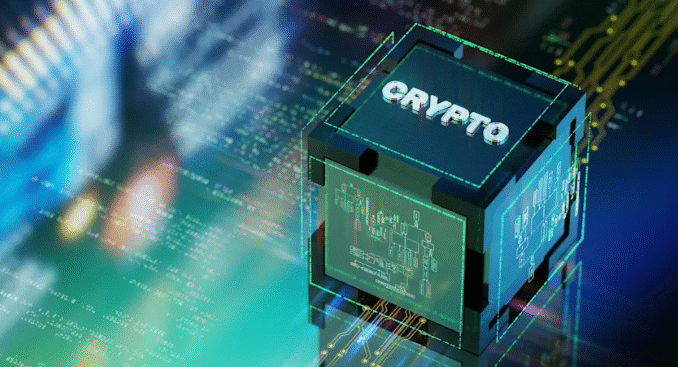
The world of finance is undergoing a monumental shift, and at the forefront is Morgan Stanley’s plan to launch direct cryptocurrency trading on its E*Trade platform in the first half of 2026. This is not merely a service expansion; it is a major institutional validation of the digital asset space.
Morgan Stanley’s E*Trade Launch, powered by a partnership with infrastructure provider Zerohash, will initially allow customers to buy and sell three major cryptocurrencies: Bitcoin (CRYPTO: BTC), Ethereum (CRYPTO: ETH), and Solana (CRYPTO: SOL). This selection is a deliberate strategy to offer clients a balanced portfolio reflecting the entire digital asset economy—from the premier store of value to the leading dApp platform and the high-speed challenger.
For E*Trade’s massive client base, this move signifies the moment to finally accumulate these tokens directly, moving beyond indirect exposure via ETFs. Investors who are looking to add a measured allocation to digital assets should understand the unique investment thesis behind this powerful trio.
Bitcoin (BTC): The Digital Gold Standard
Bitcoin stands as the anchor for the entire crypto market, with a market capitalization of approximately $2.3 trillion. Its investment thesis is straightforward and powerful: it is a decentralized, hard-capped store of value.
- Scarcity and Security: Bitcoin has a hard cap of 21 million coins, with 19.9 million already mined. The scheduled halving events—which cut the reward for mining every four years—continuously throttle new supply. This fundamental scarcity, combined with the energy-intensive Proof of Work (PoW) consensus mechanism, makes its network the most secure and predictable.
- Institutional Adoption: Major financial institutions, including Morgan Stanley itself, are increasingly recognizing Bitcoin as a digital equivalent to gold and a hedge against inflation and fiat currency devaluation. This institutional embrace, facilitated by the proliferation of Spot Bitcoin ETFs, is expected to continue driving demand well into 2026.
- Investment Role: For a wealth management client, Bitcoin serves as the “safe-haven” allocation within the high-risk crypto space—a long-term asset to be held as a core portfolio diversifier.
Ethereum (ETH): The Internet of Value
As the world’s second most valuable cryptocurrency, Ethereum (with a market cap of about $500 billion) is not just a digital currency; it is the foundational layer for Web3.
- Smart Contract Dominance: Ethereum pioneered the use of smart contracts, which power decentralized applications (dApps), decentralized finance (DeFi), and NFTs. Despite challenges with network speed and gas fees, Ethereum’s ecosystem remains the most established and dominant in terms of total value locked and developer activity.
- Proof of Stake (PoS) and Deflationary Dynamics: Following its 2022 transition to PoS, Ethereum became significantly more energy-efficient. This transition introduced staking rewards for holders and a “burning” mechanism that removes Ether from circulation with every transaction fee. When network usage is high, the circulating supply can shrink, creating a potentially deflationary asset.
- Scalability and Future Growth: While Ethereum’s Layer 1 has a maximum speed of only 18 TPS, its growth is powered by Layer 2 solutions (like Optimistic and ZK Rollups). These Layer 2s process transactions off-chain at higher speeds and lower costs, bundling them for final settlement on the main Ethereum blockchain. This architecture is key to maintaining its dominance and value accrual.
Why E*Trade is Targeting Solana (SOL)
The selection of Solana alongside Bitcoin and Ethereum is a testament to the belief in a multi-chain future, where different blockchains specialize in different functions. Solana is the high-performance challenger, with a market cap of over $100 billion.
- Breakneck Speed and Low Cost: Solana distinguishes itself with its unique Proof of History (PoH) mechanism, which timestamps transactions before they are validated. This innovation, combined with its PoS consensus, allows the Solana Layer 1 blockchain to handle 2,000–3,000 transactions per second (TPS) in the real world, dwarfing the capacity of Ethereum’s Layer 1. This high throughput makes dApps feel instantaneous and affordable for retail users.
- Rapid Developer Growth: Solana has demonstrated superior developer adoption metrics, gaining thousands of new developers in the past year. This growth is a crucial leading indicator for future platform utility and innovation.
- The Next Frontier for Finance: Solana’s architecture is uniquely suited for high-frequency, high-volume use cases, including decentralized physical infrastructure networks (DePIN) and the tokenization of real-world assets (RWAs). If Morgan Stanley’s “phase one” crypto launch is about trading, the firm’s broader focus on tokenization suggests an immense future opportunity for a chain designed for institutional speed like Solana.
Should E*Trade Investors Accumulate These Three Coins?
The launch of direct trading in the first half of 2026 is a significant catalyst. The move allows E*Trade clients to bypass the recurring fees and third-party custody associated with ETFs, offering a seamless gateway to direct ownership.
All three coins possess strong catalysts for the coming years:
- Bitcoin’s value will be reinforced by continued institutional integration and its role as a global monetary asset.
- Ethereum’s price will be driven by the adoption of its Layer 2 ecosystem, solidifying its position as the world’s most secure decentralized settlement layer.
- Solana’s price could climb as its technological supremacy and growing developer community translate into new high-volume applications and a potential Solana spot ETF.
For sophisticated investors, a balanced allocation across this trio is a pragmatic strategy. Bitcoin offers stability and scarcity, Ethereum provides exposure to the core dApp economy, and Solana acts as the high-beta growth play on scalable blockchain technology. The inclusion of Solana validates its position as a long-term key player in the digital finance revolution, making this three-coin strategy a foundational step for any portfolio looking to capture the incredible opportunity of the emerging asset class.

Leave a Reply